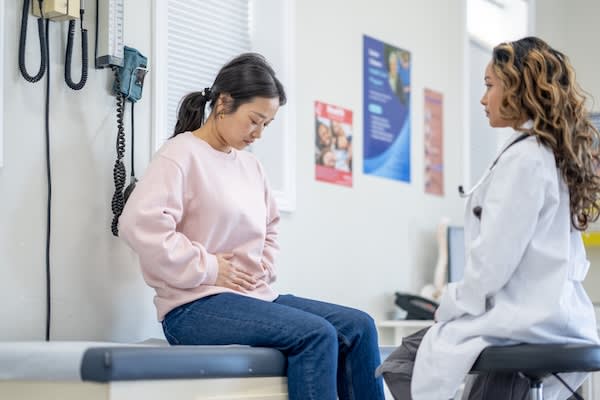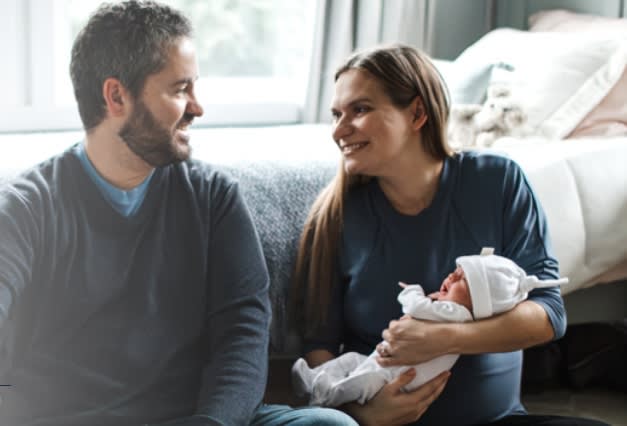Fibroids 101: A common condition with many treatment options

[3 MIN READ]
In this article:
-
Fibroids are a common condition that often goes undiagnosed — learn how to recognize the symptoms.
-
Not all fibroids require treatment, but if they are causing abnormal bleeding, discomfort or pain that interferes with day-to-day life, patients should seek relief.
-
Newer treatment options give patients less painful and less invasive options for ending fibroid pain.
Fibroids 101: A common condition with many treatment options
Fibroids are a common health condition experienced by many women, but they often go undiagnosed and untreated. Depending on their size and location in the uterus, these noncancerous growths can cause a range of unpleasant symptoms like heavy periods, bloating and frequent urination, as well as pelvic pain.
To learn more about uterine fibroids and the range of treatments that are now available, we spoke with Jessie Remington Marrs, M.D., a surgeon at Swedish Gynecology Specialty Center.
What are uterine fibroids?
The uterus has three layers. The outer layer, called the serosa, is a thin, slippery membrane. The middle layer is composed of muscular tissue, and the inner layer is the endometrium.
Fibroids can grow anywhere in the muscle tissue, including inside the muscle wall, pressing against the uterine cavity and on the outer surface of the uterus.
“The symptoms a patient experiences depend on the size and location of the fibroids,” says Dr. Marrs. “Fibroids inside or pressing into the uterine cavity tend to cause heavy or prolonged bleeding, even if they are small, while those within the muscle or on the outer surface may not cause issues until they grow large enough to create uncomfortable pressure on surrounding areas like the bladder, colon, rectum and lower back.”
Because fibroids can be asymptomatic, it is not unusual for them to be found by chance during routine pelvic exams. However, some patients experience bleeding so heavy that it leads to anemia and fatigue. These symptoms, in addition to pelvic pain, are reason for an ultrasound, imaging tests or other lab tests to confirm a diagnosis.
Fibroids can also make it difficult to conceive
“Fibroids that grow inside or push on the uterine cavity can make it hard for an embryo to implant, which can make pregnancy difficult,” says Dr. Marrs.
However, she adds that many patients don’t realize they have fibroids until they become pregnant.
“Most fibroids don’t interfere with pregnancy, but those that grow large enough can complicate delivery.”
When do fibroids need treatment?
Not all fibroids need treatment, but when the symptoms affect your well-being, you should speak with your physician or advanced practice clinician.
“It’s not just about discomfort — it’s about quality of life,” says Dr. Marrs.
She adds that if bleeding is so heavy that it leads to anemia, makes it difficult to leave the house, or requires frequent changes of pads or tampons, it is time to seek treatment.
“Some people experience symptoms with relatively small fibroids around four or five centimeters,” she says. “However, I often see patients with fibroids eight to ten centimeters or even larger — and if these fibroids grow big enough, they can press on the surrounding tissues, causing quite a bit of discomfort. They can occasionally even compress the ureter which can affect kidney function.”
Fibroid treatment options can be tailored to meet patient goals
Dr. Marrs says that fibroid treatment depends on size, as well as your symptoms and reproductive plans. Age and lifestyle preferences are other factors, and options range from medication to surgery, which now includes minimally invasive options.
- Hormonal therapy: Often a temporary solution, hormone therapy such as birth control pills, intrauterine devices and progesterone can help control abnormal bleeding. Hormone blocking medications can help shrink fibroids and reduce heavy bleeding.
- Myomectomy: This surgery removes fibroids while preserving the uterus, making it an option for patients who want to have children. Future pregnancies usually require a C-section to prevent complications.
- Uterine fibroid embolization (UFE): This procedure blocks blood flow to fibroids, causing them to shrink. This is an effective option, but the initial recovery can be painful.
- Hysterectomy: Preferred by some patients because it is a permanent solution for fibroids, a hysterectomy removes the uterus entirely.
- Radiofrequency ablation (RFA): These minimally invasive procedures use heat to break down fibroid tissue, shrinking and softening the fibroids, and relieving pain, pressure and other symptoms.
“Some patients are relieved to learn that there are alternatives to a hysterectomy,” says Dr. Marrs. “Others who do not want to become pregnant in the future prefer the definitive solution that a hysterectomy provides.”
Less invasive and painful treatment
At Swedish, one option is our new Acessa® technology, which is minimally invasive and uses radiofrequency ablation to shrink fibroids.
“With Acessa, we use laparoscopic tools to apply controlled heat to fibroids and raise them to a temperature of about 100 degrees Celsius, which causes the cells to break down,” says Dr. Marrs. “The body then gradually absorbs the dead tissue over several months.”
Unlike more invasive surgeries, Acessa does not require large incisions; most patients recover within a week with minimal medication.
“While it takes about three to six months for fibroids to shrink fully after Acessa, many patients notice immediate symptom relief, especially if a fibroid was pressing on the bladder,” Dr. Marrs says.
Choose the right fibroid treatment for you
Because fibroid symptoms vary and impact people at different stages of life, patients’ goals for treatment and recovery can be wide ranging.
“When dealing with fibroids, some patients want to avoid uterine surgery at all costs,” says Dr. Marrs. “Others just want their symptoms gone as quickly as possible. We can help them find a treatment that matches their needs and lifestyle.”
Learn more and find a physician or advanced practice clinician (APC)
If you are experiencing fibroid symptoms, talk to a doctor about your options. Contact Swedish Gynecology Specialty Center to schedule an appointment. You can also connect virtually with your physician to review your symptoms, provide instruction and follow up as needed. And with Swedish ExpressCare Virtual you can receive treatment in minutes for common conditions such as colds, flu, urinary tract infections and more. You can use our provider directory to find a specialist or primary care physician near you.
Information for patients and visitors
Related resources
It’s not all in your head. A Swedish expert on the causes, symptoms and treatment of endometriosis
At Swedish, the very best care for every woman at every stage of life
Women’s Health spotlight: An expert’s take on top health issues women face
This information is not intended as a substitute for professional medical care. Always follow your health care professional’s instructions.
Providence Swedish experts in the media
Follow us on Facebook, Instagram and X.


